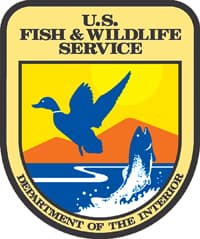West Coast Mollusks Not Believed to be at Serious Risk of Extinction
OutdoorHub 09.17.12

The U.S. Fish and Wildlife Service announced today that 14 aquatic mollusks do not warrant listing under the Endangered Species Act (ESA). The Service found that eight of the 14 mollusks were not listable entities under the definition of the ESA. The other six mollusks were found to not be warranted for listing because a review of the best available scientific and commercial information does not indicate downward population trends or that threats are negatively impacting known occurrences of these species.
Known as a 12-month finding, today’s announcement addresses 14 aquatic mollusks of the 29 total mollusks that the Service was petitioned to list in 2008. The Fish and Wildlife Offices in California, Oregon and Washington with local knowledge of the 14 species are listed below:
- Canary duskysnail
- Cinnamon juga snail
- Goose Valley pebblesnail
- Hat Creek pebblesnail
- Knobby rams-horn snail
- Nugget pebblesnail
- Potem Creek pebblesnail
- Shasta pebblesnail
- Klamath Rim pebblesnail (formerly Diminutive pebblesnail)
- Fredenburg pebblesnail (formerly Nerite pebblesnail)
- Tall pebblesnail
- Basalt juga snail
- Columbia duskysnail
- Masked duskysnail
Eight of the petitioned aquatic mollusks have not been formally described as species or subspecies in a peer-reviewed journal, or in any other source commonly accepted by the scientific community, although they were informally identified as potential species in the early 1990s, based primarily on differences in shell morphology. Since then, genetic testing has shown that differences in shell morphology are not reliable in species identification. Additionally, the informal descriptions lack genetic data, data regarding microscopic anatomical features such as radula (tongue), and photographs or drawings of anatomical features other than the shell. Such data are often highly distinctive, and are of key importance in formal descriptions of mollusk species. This led the Service to conclude that the current basis for classification is not sufficient to treat these mollusks as listable entities.
The remaining six aquatic mollusks have been formally described and are all endemic to northern California. These occur primarily in Shasta and Siskiyou Counties, with a few occurrences in Tehama and Lassen Counties.
The number of known occurrences ranges from 5 for the Hat Creek pebblesnail to 44 for the Nugget pebblesnail. Despite potential impacts from impoundments, pollution, logging, stochastic events, and other issues, at this time the Service did not find downward population trends or that the threats are negatively impacting the species.
More information on this finding and the species is available at http://www.fws.gov/sacramento.
The Service asks the public to submit to them new information as it becomes available concerning population trends, additional occurrences, and threats to these mollusks.
The mission of the U.S. Fish and Wildlife Service is working with others to conserve, protect and enhance fish, wildlife, plants and their habitats for the continuing benefit of the American people. We are both a leader and trusted partner in fish and wildlife conservation, known for our scientific excellence, stewardship of lands and natural resources, dedicated professionals and commitment to public service. For more information on our work and the people who make it happen, visit www.fws.gov. Connect with our Facebook page at www.facebook.com/usfws, follow our tweets at www.twitter.com/usfwshq, watch our YouTube Channel at http://www.youtube.com/usfws and download photos from our Flickr page at http://www.flickr.com/photos/usfwshq.

